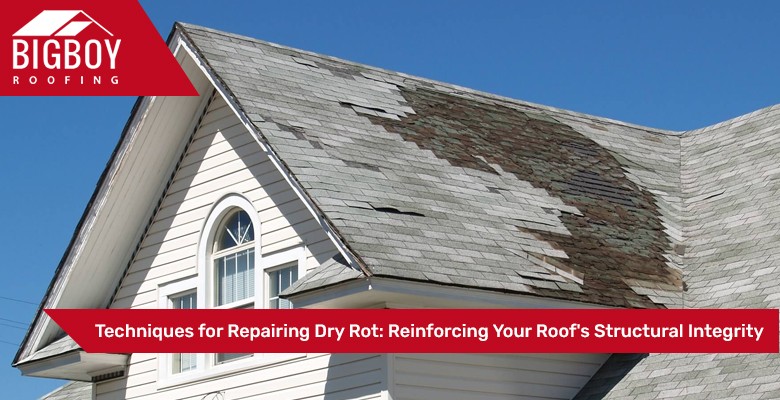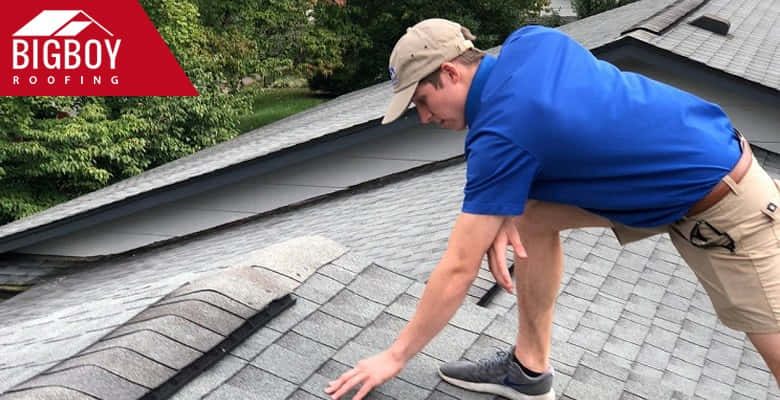Techniques for Repairing Dry Rot: Reinforcing Your Roof’s Structural Integrity
Dry rot can cause serious damage to your roof structure. When wood is constantly exposed to moisture and is not able to dry out, fungus develops in the wood, which gradually weakens it. Identifying it on time and making proper repairs is very important to maintain the strength of your roof. Ignoring this problem can increase the risk of roof collapse. By treating dry rot in the roof, you can not only strengthen your roof but also increase its life. Here are 8 major dry rot repair methods, by adopting which you can keep your roof structure safe.

Understanding Dry Rot
Dry rot is a type of fungal infection that weakens wood due to moisture. This problem arises when wood gets wet and does not get a chance to dry again. This rot mainly occurs in places where moisture remains for a long time, such as roof corners, beams, or wood joints.
How Dry Rot Develops
When wood is exposed to moisture for a long time, fungal spores begin to develop in it. These spores penetrate deep into the wood, making it weak and brittle. If not stopped in time, this rot can gradually damage the entire roof structure. Dry rot is easier to fix in its early stages, so it is very important to recognize the early signs.
Symptoms of Dry Rot
There are some major symptoms of dry rot in the roof, which include:
- Wood turning brittle: If the wood starts breaking or splintering when touched, it can be a sign of dry rot.
- Discoloration: At the beginning of dry rot, the color of the wood can turn light or brown.
- Cracks: Deep cracks in the wood can also be a sign of dry rot.
- Damp smell: If you notice a damp or rotten smell coming from the roof, this can be an early sign of dry rot.
Assessing the damage
Before starting dry rot repairs, it is important to thoroughly inspect the roof. The purpose is to know how much the rot has spread and which parts are affected. Only by assessing the roof rot can you make the right repair plan.
How to do the correct inspection
When inspecting the roof, pay attention to areas where there is more moisture, such as the corners of the roof, around pipes, and in the joints of wooden beams. You can find out whether the wood is solid or hollow by lightly tapping on the wood with a small hammer. If the sound is hollow, it means the wood has weakened. Also take a good look at the inside of the roof with the help of a flashlight.
Assessing the severity of the damage
It is important to properly assess the damage to know whether the wood has decayed and needs to be removed or repaired. If the rot is deep enough, the repair may require replacing with new wood.
Preparing for the repair
There are some important preparations you need to make before you repair dry rot. First of all, it is important to follow safety measures, as mold particles can spread into the air while removing dry rot wood. Also, it is important to keep the affected area clean and dry so that the repair can be done properly.
Safety measures
When you repair dry rot, it is important to wear a mask and gloves so that you do not come in contact with the mold. Mold particles can enter the body through the breath while working, which can be harmful to health. Also, keep the area well-ventilated so that there is fresh air while working.
Preparing the area
Before the repair, clean the area where you are going to work. Before cleaning the wood rot, remove all debris and dust from the surrounding area. This ensures that there are no obstructions during the repair. Also, keep all the necessary tools for the repair ready beforehand so that the work can be done without any interruption.
Technique #1: Removing the rotten wood
Completely removing the dry rotten wood is the first and most important technique of repair.
Safely Removing the Wood
First, carefully remove the rotten wood with the help of a knife or saw. In this process, make sure to remove only the rotten part. Removing too much wood can weaken the roof structure. Remove only as much wood as necessary and ensure that the remaining wood is solid and healthy.
How Much Wood to Remove
While removing the wood, keep in mind its thickness and the depth of the rot. You have to ensure that you are removing only the rotten part and leaving the solid wood intact. If the wood is completely rotten, it needs to be removed completely so that further repairs can be done properly.
Technique #2: Treating with a Fungicide
A fungicide application is an important step in treating dry rot. This fungicide helps to kill the fungus that has spread in the wood and prevent it from spreading again.
Choosing the Right Fungicide
When choosing a fungicide, make sure that it is effective and can penetrate deep into the wood and kill the fungus. There are many types of fungicides available in the market, but you should choose the one that is best suited for your wood repair. A good fungicide not only kills the fungus but also prevents it from growing again.
Using the Fungicide Correctly
Apply the fungicide thoroughly to the part of the wood where the rot is found. It can be applied with the help of a brush or spray. Make sure not to let the wood get wet until the fungicide dries, so that it can have full effect. This treatment helps to eradicate dry rot from its roots.
Technique #3: Strengthening with Epoxy
When a part of wood becomes weak, epoxy can be used to strengthen it again. Epoxy is a chemical substance that is used to fill and strengthen the holes and cracks in wood.
Introduction to Epoxy
Epoxy is used to fill the damaged parts of wood and provide them stability again. It penetrates the weak part of the wood and prevents it from rotting and keeps the roof structure strong. Epoxy provides a solid and strong base to the wood, so that it does not weaken again.
Steps to Apply Epoxy
First clean the part of the wood where the epoxy is to be applied. After this, fill the affected area with epoxy and let it dry. Epoxy takes some time to dry completely, but once dried, it gives stability and strength to the wood. Use a smooth brush or tool to spread it well, so that the epoxy can penetrate deep into the wood.
Technique #4: Replacing the Wood
If the wood is completely rotted and repairs are not working, it is necessary to replace the wood. Sometimes the damage is so deep that it must be removed and replaced with new wood.
Choosing New Wood
If a large portion of the wood has rotted, replacing it with new wood is the best solution. It is important to match the new wood to the old wood structure so that the roof remains strong. When replacing wood, make sure that the type and size of the new wood matches the old structure.
Strengthening the Structure
When installing new wood, make sure it fits correctly. Proper installation of wood makes the roof structure stable and secure again. Don’t forget to treat the new wood with a fungicide after installing it, so that dry rot does not occur again in the future.

Technique #5: Improving Ventilation
Dampness is one of the main causes of dry rot, and the best way to prevent it is through good ventilation. If there is no proper air flow inside the roof, moisture gets trapped there, which promotes dry rot.
Importance of Ventilation
Good ventilation controls the moisture inside the roof. If there is proper air flow in the roof interiors, moisture does not accumulate, which reduces the risk of mold and rot. Moreover, ventilation not only prevents moisture but also keeps your roof cool and fresh.
Ways to Improve Ventilation
You can install vents to improve ventilation in the roof interiors. Make sure all the vents are clean and open so that air can pass through without any obstruction. If necessary, use additional vents or fans so that air flows properly throughout the roof.
Dry rot can cause serious damage to the roof structure, but it can be prevented with timely repairs. By using these 8 effective techniques, you can not only fix dry rot but also keep your roof structure safe and strong for a long time. Regular inspections, proper ventilation, and proper repair procedures will increase the life of your roof and keep it safe for years to come.
FAQs
How to identify dry rot?
Signs of dry rot include wood becoming brittle, discoloration, and cracking. If you notice any of these signs, have your roof inspected as soon as possible so the problem can be resolved before it grows.
What preventive measures can be taken to avoid dry rot?
Regular roof inspections and proper ventilation are essential to avoid dry rot. It is important to control humidity and keep the wood dry so that mold does not grow.
Can epoxy completely repair dry rot wood?
Yes, the correct use of epoxy can make dry rot wood strong again. Epoxy provides stability to wood by filling in the weak parts of the wood, preventing it from rotting again.
How long does it take to repair dry rot?
The time it takes to repair dry rot depends on how severe the damage is. If the damaged part is small, repairs can be done quickly, but if the wood is completely rotten, new wood may have to be installed, which may take more time.

